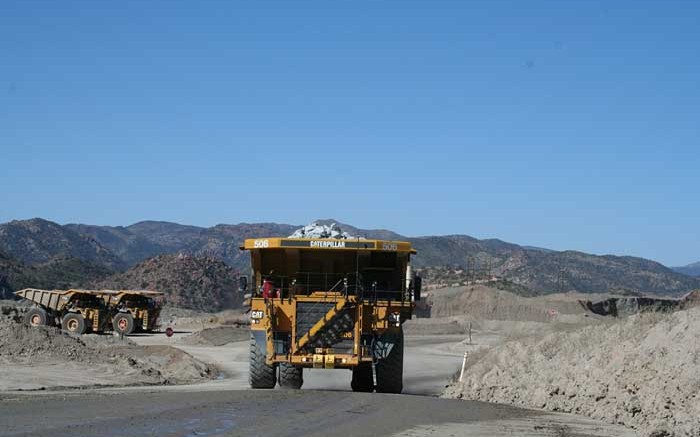VANCOUVER — Six months after buying the Pinto Valley mine, Capstone Mining (TSX: CS; US-OTC: CSFFF) has shown that the copper–molybdenum–silver mine can be operated for at least eight extra years and produce a billion more pounds of copper than previously projected.
Capstone bought Pinto Valley from BHP Billiton (NYSE: BHP) for US$650 million in October, adding to its roster an open-pit mine 125 km east of Phoenix, Ariz., that has operated intermittently since 1974. When the deal was done, reserves at Pinto Valley were only enough to sustain five more years of mining.
But Capstone looked at the US$194 million BHP had just poured into upgrading the mine and saw potential beyond Pinto Valley’s official books.
It looks as though the mid-tier producer was right. Within six months Capstone turned several years of prior exploration work into a prefeasibility study (PFS) that extends the mine life at Pinto Valley to 2026, instead of 2018. Over those additional years the operation could annually churn out 119.5 million lb. copper, 1.4 million lb. moly and 235,000 oz. silver in concentrate, plus another 6.3 million annual lb. copper cathode.
For the first two years of the extension mill throughput would stay steady at 50,000 tonnes per day, before rising to 52,000 tonnes per day in year three.
The mine life extension carries an after-tax net present value of US$738 million, using a 10% discount rate. Capital costs for the expansion total US$188 million. Of that, US$48 million is needed to beef up Pinto Valley’s mining fleet. The company would need a third drill, two hydraulic shovels and four additional loaders.
Capstone expects to invest almost a quarter of the expansion capital in 2014, spending US$21.1 million on mining equipment, US$8.5 million on the concentrator and millions more on the tailings facility, general mine infrastructure and engineering.
“The Pinto Valley PFS has validated the purchase price and confirms our position as a leading intermediate copper producer,” said Capstone president and CEO Darren Pylot in a release. “Completion of the PFS extends the mine life to 2026 and provides us with the platform to stabilize operations and gain efficiencies, and gives us the opportunity to take a longer-term view towards the future of the Pinto Valley mine.”
Resources at Pinto Valley total 1.6 billion measured and indicated tonnes grading 0.3% copper and 0.007% moly — a 61% increase compared to BHP’s last estimate.
Reserves are 232.2 million proven and probable tonnes grading 0.33% copper and 0.008% moly. Limited capacity in the existing tailings facility was the primary constraint in terms of converting resources to reserves. Some resource areas need further study before being eligible for the upgrade to reserve status. Surface ownership was also a constraint.
Capstone says the property hosts “a significant amount of additional mineral resource that could potentially be mined if the constraints were removed.”
Pinto Valley is a conventional open-pit mine. Ore grading better than 0.18% copper is crushed, ground and floated to produce a copper–moly–silver concentrate. Ore grading between 0.1% and 0.18% copper is leached, and the leach concentrate is processed through a solvent extraction–electrowinning plant to produce copper cathodes. Metal recoveries average 88% for copper and 42.8% for moly.
With the Pinto Valley PFS in hand, Capstone updated its 2014 guidance. The company expects to produce 102,000 tonnes of copper in concentrates from its three mines, which are Pinto Valley; the underground Cozamin copper–silver–zinc–lead mine in Zacatecas, Mexico, and the combined open-pit and underground Minto copper–gold–silver mine in Yukon, Canada. Net of by-product credits and selling costs, Capstone expects its cash costs to average between US$1.90 and US$2 per lb. copper this year.
That is slightly above its cash costs in 2013, which averaged US$1.72 per lb. Cozamin was Capstone’s most efficient mine, producing 45.5 million lb. copper at a US$1.18 per lb. cash cost. Minto, meanwhile, churned out 37.2 million lb. copper for US$1.93 per lb.
Last year the company posted a US$9.4-million net loss, but the company still ended the year with US$104 million in its treasury. Some of these funds will go to Pinto Valley. Others will be spent at Santo Domingo, a large iron oxide–copper–gold development project in Chile. Santo Domingo is a 70/30 joint venture between Capstone and Korean Resources, and the partners expect to finish a feasibility study before mid-year.
On news of the Pinto Valley study Capstone shares gained 14¢ to close at $2.87. The company has a 52-week share price range of $1.68 to $3.35, and 381 million shares outstanding.


Be the first to comment on "Capstone more than doubles Pinto Valley mine life"